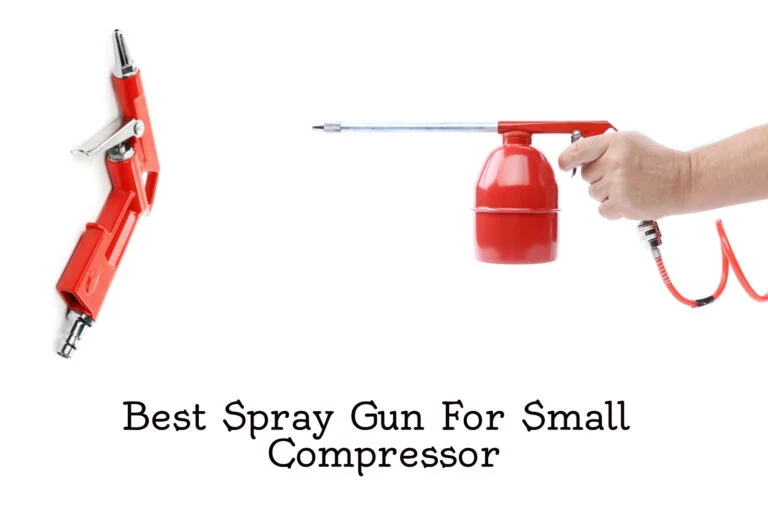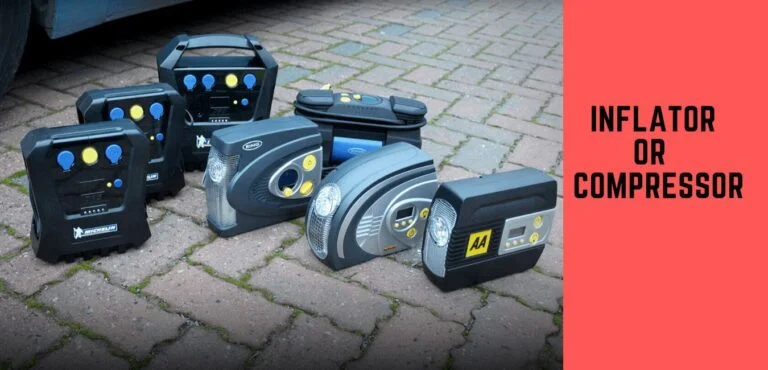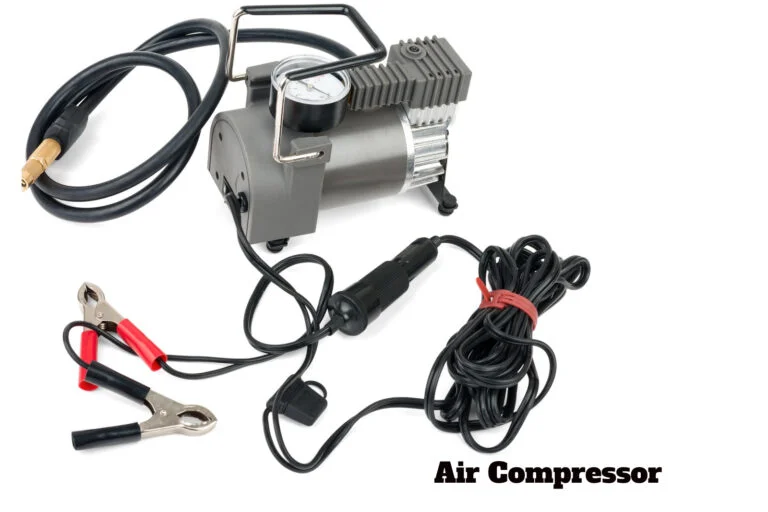Alignment Matters: The Importance of Wheel Alignment
Imagine driving smoothly down the open road, your vehicle performing at its peak. This optimal performance, often overlooked, largely depends on accurate wheel alignment. Misalignment can impact fuel efficiency, tire wear, and overall vehicle performance. In this comprehensive guide, we will delve into the intricacies of wheel alignment, its importance, indications of poor alignment, and practical maintenance tips. Understanding this crucial aspect of vehicle upkeep can liberate you from unnecessary costs and potential safety hazards.
Key Takeaways
- Wheel alignment is crucial for optimal vehicle performance, handling, fuel efficiency, and tire life.
- Signs of poor wheel alignment include uneven tire wear, vehicle pulling to one side, vibrations in the steering wheel, and a crooked steering wheel when driving straight.
- Misalignment can have a negative impact on vehicle performance, including reduced fuel efficiency, accelerated tire wear, increased rolling resistance, and premature component wear.
- Proper wheel alignment plays a significant role in maximizing fuel efficiency by reducing fuel consumption, rolling resistance, and friction between tires and the road.
Understanding the Basics: What Is Wheel Alignment
Diving into the fundamentals, wheel alignment is a critical aspect of vehicle maintenance that involves adjusting the angles of the wheels to the manufacturer's specifications to ensure optimal vehicle performance. In essence, wheel alignment is the process of syncing your vehicle's wheels and axles to move together in harmony, promoting better handling, fuel efficiency, and prolonged tire life.
The core of wheel alignment lies in the tuned suspension geometry, which is a delicate balance of angles and measurements. The placement of wheel spacers, for instance, can significantly affect this geometry and, consequently, alignment. Wheel spacers are used to extend the vehicle's wheelbase, creating a wider, more stable stance. However, incorrect use of wheel spacers can lead to misalignment, causing uneven tire wear and compromising vehicle safety.
Precise wheel alignment is not merely a desirable attribute but a necessity for any vehicle. It is a systematic process, requiring expertise and precision, and contributes significantly to the overall driving experience. With the basics of wheel alignment now clearer, it's time to delve into the key indicators of poor wheel alignment, which is crucial to understanding when alignment adjustments are required.
The Key Indicators of Poor Wheel Alignment
Anyone experiencing unusual vehicle behavior or noticing irregular tire wear should be aware that these could be key indicators of poor wheel alignment, and immediate attention may be necessary. Even the most lightweight wheels and high-performance tires can't function optimally if the alignment is off.
Key indicators to look out for include:
- Uneven or Rapid Tire Wear: This can be a clear sign that your wheels are not aligned properly. Keep an eye out for one tire wearing down more quickly than the others.
- Vehicle Pulling to One Side: If your vehicle consistently drifts or pulls in one direction, this could indicate an alignment issue.
- Vibrations in the Steering Wheel: This discomforting sign could be due to unbalanced tires or misalignment.
- Crooked Steering Wheel: If your steering wheel is off-center when driving straight, it's likely your wheels need alignment.
Understanding and recognizing these signs is crucial for maintaining vehicle safety and performance. Immediate rectification can save you from bigger problems down the line. Next, we will explore how misalignment impacts vehicle performance, further emphasizing the importance of regular wheel alignment checks.
How Misalignment Impacts Vehicle Performance
Misalignment of wheels significantly affects vehicle performance in various ways. For instance, it can lead to a reduction in fuel efficiency as the vehicle's engine has to work harder to propel the car forward. Furthermore, misalignment can accelerate tire wear, compromising the handling of the vehicle and potentially leading to safety concerns.
Fuel Efficiency Reduction
A significant number of studies have shown that wheel misalignment can negatively impact a vehicle's fuel efficiency, leading to a potential increase in fuel consumption. This is due to several factors:
- Increased rolling resistance: Misaligned wheels create uneven contact with the road, increasing the effort required to move the vehicle.
- Higher engine load: The engine must work harder to overcome the additional friction, burning more fuel in the process.
- Aerodynamic drag: Misalignment may cause the vehicle to 'crab' slightly, increasing air resistance.
- Premature component wear: Misalignment can result in faster degradation of tires and suspension components, necessitating more frequent replacements.
Understanding and addressing these issues can liberate drivers from unnecessary fuel costs and vehicle wear. Next, we will explore how misalignment accelerates tire wear.
Tire Wear Acceleration
Not only does wheel misalignment hamper fuel efficiency, but it also speeds up tire wear, thereby impacting overall vehicle performance. Misaligned wheels lead to uneven tire wear, causing premature replacement. This is because the tire tread diminishes unevenly, reducing the tire's lifespan. Furthermore, the skewed alignment causes the tire to drag rather than roll, inducing unnecessary friction and accelerating wear. These factors degrade the tires' ability to grip the road, negatively affecting vehicle performance such as fuel economy, handling, and ride comfort. Considering these repercussions, the need for periodic wheel alignment checks becomes evident to maintain optimal vehicle performance. Now, having understood the impact on performance and tire wear, let's delve into how misalignment can also lead to handling and safety issues.
Handling and Safety Issues
During periods of high-speed travel or in hazardous weather conditions, improperly aligned wheels can compromise vehicle handling, and therefore, pose significant safety risks. Misalignments can make it difficult for the driver to control the vehicle, potentially resulting in accidents.
Here are several ways wheel misalignment can impact vehicle performance:
- *Decreased traction*: Misaligned wheels may not make proper road contact, reducing traction and stability.
- *Poor fuel economy*: Incorrect alignment increases rolling resistance, causing your vehicle to burn more fuel.
- *Premature tire wear*: Misalignment can lead to uneven tire wear, shortening their lifespan.
- *Impaired steering response*: Misaligned wheels can cause the steering to become unresponsive or erratic.
Understanding these impacts emphasizes the necessity of regular wheel alignments to ensure optimal vehicle performance and safety.
The Role of Wheel Alignment in Fuel Efficiency
By contributing to optimal tire performance, proper wheel alignment plays a crucial role in maximizing fuel efficiency for vehicles. Misaligned wheels create uneven pressure on the tires. They tend to push against each other, and this conflict of movement results in the vehicle needing to exert more effort, hence consuming more fuel.
When wheels are properly aligned, they are adjusted to manufacturer's specifications, ensuring that they are parallel to each other and perpendicular to the ground. This optimal positioning reduces rolling resistance, the friction between the tire and the road surface. Lower rolling resistance translates to less energy (fuel) required to move the vehicle, thereby improving fuel economy.
Additionally, correct alignment lessens tire wear, resulting in longer tire lifespan. This indirectly contributes to fuel efficiency, as worn-down tires can increase rolling resistance, negatively impacting fuel consumption.
Regular wheel alignment checks and necessary adjustments can ensure optimal tire performance, maintain fuel efficiency, and extend tire life. This not only saves cost on fuel and tire replacement but also contributes to the vehicle's overall performance and longevity. In essence, the role of wheel alignment in fuel efficiency is vital and should not be overlooked in vehicle maintenance.
The Connection Between Wheel Alignment and Tire Wear
In addressing the interplay between wheel alignment and tire wear, it is crucial to understand the significant impact misalignment can have on tire longevity. When wheels are improperly aligned, the uneven distribution of vehicle weight can lead to accelerated and irregular tire wear. Consequently, maintaining precise wheel alignment is a practical strategy for preventing premature tire replacement, thereby promoting cost-effectiveness and vehicle safety.
Alignment Impact on Tires
A significant proportion of tire wear can be directly attributed to improper wheel alignment, highlighting a crucial connection between the two. Misalignment can cause various adverse effects on tires, such as:
- Rapid tire wear: Misalignment can cause tires to wear out faster than normal.
- Uneven tire wear: Misalignment can cause tires to wear unevenly, leading to premature replacement.
- Reduced tire performance: Misalignment can affect the grip, handling, and safety of your tires.
- Increased fuel consumption: Misaligned wheels can decrease fuel efficiency due to increased rolling resistance.
Understanding the impact of alignment on your tires is key to maintaining optimal vehicle performance. By ensuring proper wheel alignment, you not only extend the life of your tires but also enhance your driving experience. Now, let's delve into preventing uneven tire wear.
Preventing Uneven Tire Wear
Your vehicle's longevity and performance can be significantly impacted by uneven tire wear, and proper wheel alignment is a critical factor in preventing this issue. Misaligned wheels cause your tires to wear out at an accelerated rate, reducing their lifespan and compromising your vehicle's safety. Optimal wheel alignment ensures even tire wear, prolonging their life and enhancing the vehicle's performance.
To better understand the connection between wheel alignment and tire wear, consider the following table:
| Wheel Alignment | Even Tire Wear | Vehicle Performance |
|---|---|---|
| Optimal | Yes | Enhanced |
| Misaligned | No | Compromised |
| Corrected | Improved | Restored |
In essence, wheel alignment liberates your vehicle from unnecessary wear and tear, promotes safety, and gives you a smoother ride. Regular checks and adjustments can ultimately save you time, money, and potential hazards down the road.
Safety Concerns Stemming From Improper Alignment
With improper wheel alignment, several safety concerns arise that can significantly compromise the vehicle's performance and the safety of its occupants. Misaligned wheels can cause the vehicle to pull to one side, leading to uneven tire wear and potentially, tire blowouts. Furthermore, it can affect the vehicle's handling, making it difficult to steer and maneuver, particularly at high speeds or in challenging driving conditions.
The following are some key safety concerns due to improper wheel alignment:
- Increased risk of tire blowouts due to uneven tire wear
- Reduced braking efficiency, which can compromise stopping distances
- Poor vehicle handling, making it harder to steer and maneuver
- Increased driver fatigue due to the need for constant steering corrections
Given these potential hazards, maintaining correct wheel alignment is not just a matter of optimizing vehicle performance and longevity, but a crucial aspect of ensuring road safety. Drivers should be aware of the signs of misalignment and seek professional assistance as needed.
This segues seamlessly into our subsequent section, where we will provide a detailed, step-by-step guide on the process of wheel alignment.
The Process of Wheel Alignment: A Step-by-Step Guide
Delving into the procedures of wheel alignment, we will walk you through a comprehensive step-by-step guide that elucidates this pivotal process in vehicle maintenance. This guide will empower you with the knowledge to understand this vital automotive procedure.
Firstly, a preliminary inspection of your vehicle's suspension and steering systems is essential to identify any worn or damaged components that could affect the alignment process. This initial step is crucial to ensure the effectiveness of the subsequent alignment.
Secondly, the vehicle's current alignment parameters are measured using specialized equipment. This data serves as a benchmark, enabling the technician to identify the adjustments needed.
Next, the technician will adjust the vehicle's camber, caster, and toe angles to the manufacturer's specifications. These adjustments ensure that the tires are perpendicular to the ground and parallel to each other, promoting optimal tire wear and vehicle handling.
Lastly, a post-alignment check is conducted to validate the accuracy of the alignment process. A road test may also be carried out to verify the vehicle's handling characteristics.
Understanding this process underscores the importance of regular wheel alignments, liberating you from avoidable repairs and unnecessary wear and tear. Your vehicle's alignment is not just another maintenance task—it's a key determinant of your vehicle's performance and safety.
Regular Wheel Alignment: When and Why It's Necessary
In the realm of vehicle maintenance, understanding when and why regular wheel alignment is necessary can significantly enhance the performance and lifespan of your vehicle. This crucial service aligns the vehicle's wheels and axles to each other and to the ground, ensuring optimal contact with the road surface. This not only bolsters vehicle safety but also contributes to fuel efficiency and tire longevity.
There are several tell-tale signs that your vehicle may need an alignment service:
- Your vehicle pulls to one side while driving.
- The steering wheel vibrates or is not centered when driving straight.
- You notice uneven tire wear.
- The vehicle handling feels loose or unstable.
Regular wheel alignment is typically recommended every two to three years or every 24,000 to 30,000 miles. However, more frequent checks may be necessary if you frequently drive on rough roads or have been involved in a collision. Ignoring these signs and skipping regular alignment can lead to premature tire wear, reduced fuel efficiency, and even potential safety hazards. Thus, the importance of regular wheel alignment in vehicle maintenance cannot be overstated.
Professional Service Vs DIY: Pros and Cons of Wheel Alignment
The comparison between professional service and Do-It-Yourself (DIY) methods in relation to wheel alignment presents a multifaceted discussion. Analyzing the challenges associated with DIY approaches, such as equipment requirements and technical proficiency, facilitates a comprehensive understanding of the potential drawbacks. Concurrently, an examination of the benefits offered by professional services, from their expertise to their high-grade tools, provides a clear picture of the advantages in this context.
DIY Alignment Challenges
Why, then, might one consider grappling with the challenges of DIY wheel alignment versus opting for professional service, and what are the associated pros and cons of each approach? The appeal of DIY lies in the potential cost savings and the sense of accomplishment. However, it comes with its own set of challenges:
- Lack of professional tools and equipment
- Requirement for technical knowledge and precision
- Time-consuming and labor-intensive
- Potential for costly mistakes
On the other hand, professional service ensures accurate alignment with minimal effort from the vehicle owner. Although it may be more costly upfront, it could save money in the long run by preventing uneven tire wear and maintaining optimal vehicle performance. Ultimately, the choice between DIY and professional wheel alignment depends on individual preferences, skills, and resources.
Professional Service Benefits
While we've explored the potential advantages and pitfalls of tackling wheel alignment as a DIY project, it's crucial we now delve into the benefits of opting for professional service.
| Professional Service | DIY | Comparison |
|---|---|---|
| Expertise ensures precision | Precision relies on skill level | Professionals offer reliable accuracy |
| Access to specialized tools | Limited to owned equipment | Professional tools enhance precision |
| Time-saving convenience | Time consumption depends on skill | Professionals expedite the process |
| May include warranties | No warranty protection | Professional service provides peace of mind |
Engaging professionals guarantees accurate alignment, access to top-tier tools, time efficiency, and possible warranties. Conversely, DIY practices harbor potential inaccuracies, tool limitations, and potential time-drain, sans warranty. Now, let's transition into tips for maintaining optimal wheel alignment.
Tips for Maintaining Optimal Wheel Alignment
Regular checks and necessary adjustments are key strategies in maintaining optimal wheel alignment, ensuring your vehicle performs at its best and safest. Consistent monitoring of your vehicle's wheel alignment can prevent excessive tire wear, improve gas mileage, and ensure a smoother, safer ride.
To maintain optimal wheel alignment, consider the following tips:
- Regular Inspections: Schedule periodic wheel alignment checks with a professional service provider. This should ideally be done every 2 to 3 years or after every 20,000-30,000 miles, whichever comes first.
- Driving Habits: Avoid rough roads and potholes as these can throw your wheels out of alignment. Practice careful driving habits to reduce wear and tear.
- Timely Repairs: If you notice any signs of misalignment such as uneven tire wear, steering wheel vibration, or the vehicle pulling to one side, it's critical to have these issues addressed promptly.
- Balanced Load: Distribute weight evenly in your vehicle to avoid one-sided pressure that can lead to misalignment.
Frequently Asked Questions
What Is the Average Cost of Professional Wheel Alignment?
The average cost of professional wheel alignment typically ranges from $50 to $100, depending on the vehicle's make and model. This service is a crucial part of vehicle maintenance ensuring optimal performance and longevity.
Can I Drive My Car Immediately After Having the Wheels Aligned?
Yes, it's perfectly safe to drive your car immediately after a wheel alignment. Just like a freshly tuned piano, your vehicle is in prime condition to perform optimally, ensuring a smooth and efficient ride.
What Are the Different Methods of Wheel Alignment Used by Professionals and How Do They Differ?
Professional wheel alignment methods include traditional string or laser alignment and advanced 3D wheel alignment. While string and laser methods focus on individual wheels, 3D alignment considers the vehicle's overall geometry.
What Tools Are Required for DIY Wheel Alignment?
DIY wheel alignment requires specific tools such as a camber/caster gauge, turn plates, toe plates, and measuring tapes. Comprehensive understanding of these tools is essential for accurate alignment and vehicle performance optimization.
How Long Does a Professional Wheel Alignment Service Typically Take?
A professional wheel alignment service typically takes between 30 minutes to an hour. This duration can vary depending on the vehicle's condition and the specific alignment process used by the service provider.
Conclusion
In conclusion, wheel alignment plays a significant role in maintaining vehicle performance, fuel efficiency, and tire longevity. Regularly monitoring alignment indicators and ensuring timely professional services can prevent potential damages and unnecessary expenses. Conversely, DIY methods may offer immediate solutions but lack thoroughness. Thus, understanding and prioritizing wheel alignment is crucial for optimal vehicle operation and maintenance, emphasizing the adage that alignment matters.







